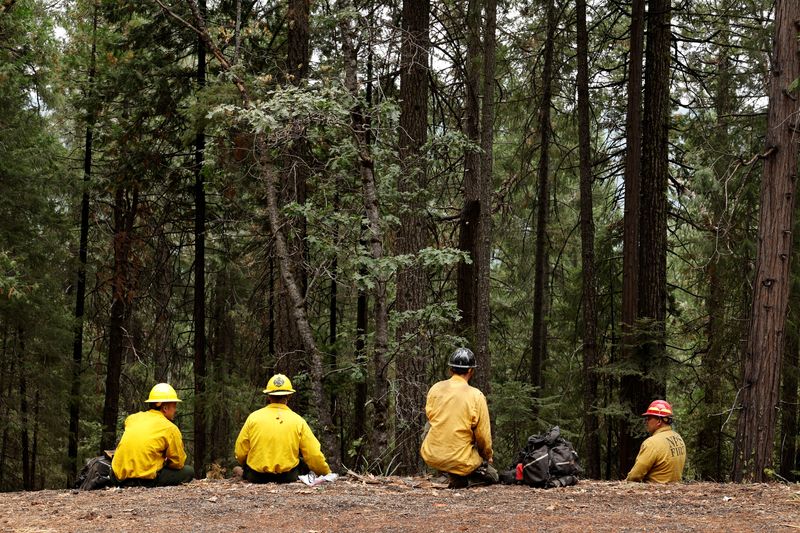California wildfire now fourth largest in state history, hot weather offers no relief
2024.08.03 19:21
By Rich McKay
(Reuters) – More than 6,000 firefighters in California’s Central Valley continued to battle the largest blaze in the U.S. on Saturday, which burned its way into the history books as the state’s fourth largest conflagration on record.
There was barely a taste of rain on Saturday from thunderstorms that brought wind and rainfalls of zero to a 10th of an inch of precipitation, forecasters said.
The 100-degree heat along with winds up to 25 mph or more in some spots, offered little relief to the firefighters, trying to contain the Park Fire, scorching the wilderness terrain some 100 miles north of Sacramento, the state capital.
“We had some thunderstorms that just brought us down-drafts, that’s a problem,” said Christopher Young, a spokesman for California Department of Forestry and Fire Protection, or Cal Fire. “Lightning is a factor we worry about,” he said.
Blazes from the Park Fire, started by an alleged arsonist who pushed a flaming car down a 60-foot gully near Chico, California, on July 24, has since burned more 400,000 acres (162,200 hectares) or more than 600 square miles, an area larger than the city of Los Angeles.
The 42-year-old man arrested hasn’t entered a plea as of Saturday, but was charged with arson and held without bail, officials said.
More than 560 homes and other structures were destroyed since the blaze started 11 days ago, feeding off of downed timber and tinder dry grass and brush. The fire was 27 percent contained on Saturday, officials said.

The rough, wilderness terrain means it takes 2-to-3 hours to reach the fire lines, officials said. Some firefighters are being flown to the front lines by helicopters, some expected to stay there for days with supplies also flown in.
The national wildfire season has had an intense start, raising the risk of stretching fire-fighting resources too thin. The center has already requested help from firefighters in Australia and New Zealand, who will arrive starting Aug. 7 and deploy to Oregon and Washington.








